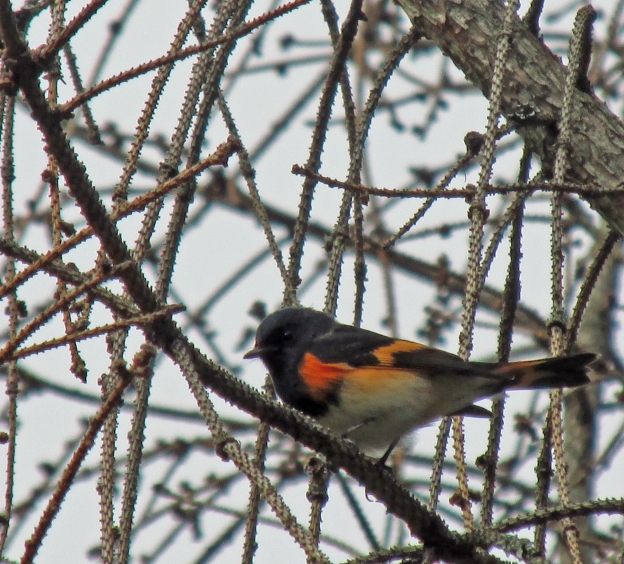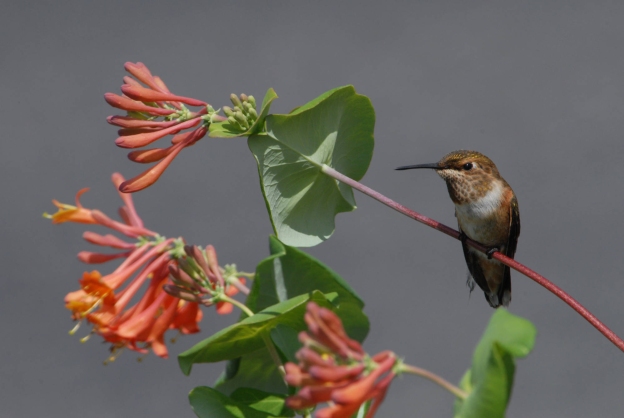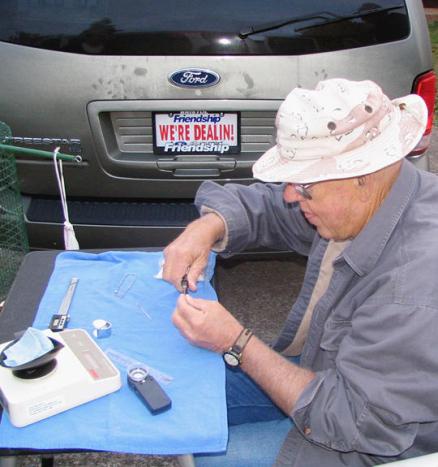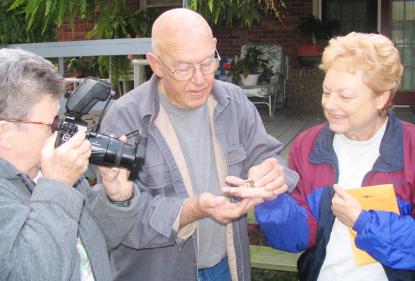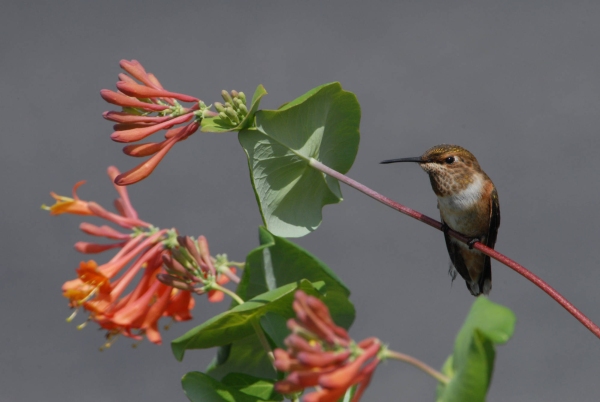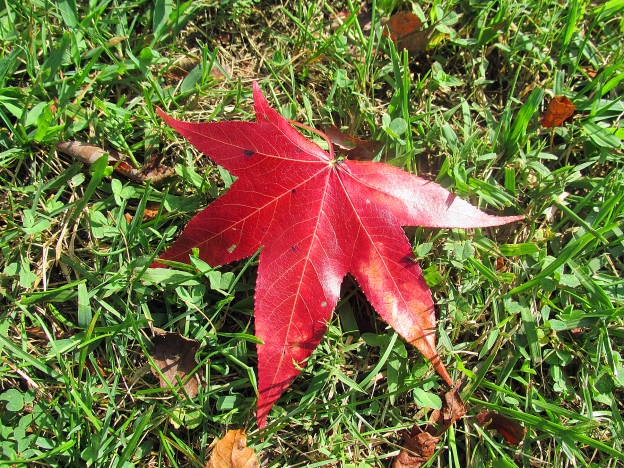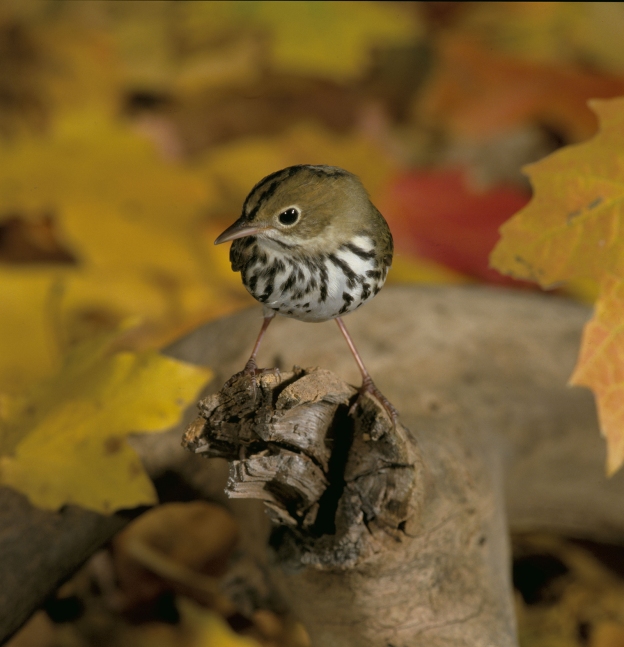As September comes to a close this week, I decided to look back and see how the pace of fall migration proceeded throughout the month here at my home in Hampton, Tennessee.
On the first day of September, which doubled as Labor Day this year, I saw a single Common Nighthawk, as opposed to the flock of 50 nighthawks I observed on the final day of August. I only saw one warbler, but it was a Chestnut-sided Warbler and different than the three species — Yellow-throated Warbler, Northern Parula and Magnolia Warbler — I saw on the final day of August.

Photo by Bryan Stevens A Yellow-throated Warbler makes a migratory stop in my yard on the first day of September.
Other birds that helped me welcome September included several Gray Catbirds and Blue-gray Gnatcatchers, Eastern Wood-Pewee, Brown Thrasher and family flocks of American Goldfinches and House Finches. Earlier in the day, I also watched and listened as a Common Raven flew overhead. The Ruby-throated Hummingbirds are also still numerous.
I tried to carve out some time each day in September to look for migrants visiting my yard, but the weather and my work schedule didn’t always make that possible. Nevertheless, I spent a good amount of time scanning for migrants at every opportunity this past month.
I call my “migrant watching” my “lawn chair birding” because some of the time I am seated in a plastic lawn chair scanning trees and shrubs for any sign of movement. I spent a lot of time on my feet, however, since a flash of color or an unknown chip note sends me searching. My mother joins me much of the time, and she has a welcome ability to detect movement among the green leaves of the trees.

Photo by Bryan Stevens
Some of the Rose-breasted Grosbeaks migrating through this fall still retain some of their rosy color.
One particular spot in the yard seems better than others for detecting migrating visitors. Some hawthorn and willow trees, as well as an American holly and wild cherry trees, line the creek that flows past the yard. On the other side, the fish pond borders these trees. The branches of dead conifers offer attractive perches for such birds as Eastern Wood-Pewees and Cedar Waxwings, as well as the occasional warbler.
On Sept. 5, I enjoyed another good evening of lawn chair birding, adding a few new warblers for the fall to my list. I saw four species, but two of them — immature Black-and-White Warbler and Black-throated Green Warbler — were new for the fall. I also saw Chestnut-sided Warbler and Northern Parula. A sizable flock of at least 50 Common Nighthawks passed overhead at one point in the evening. Other sightings included Eastern Phoebe, Brown Thrasher, Gray Catbirds, Wood Thrush, Pileated Woodpecker, Red-eyed Vireo and Ruby-throated Hummingbirds. All the resident feeder birds have enjoyed a good nesting seasons. The numbers of Song Sparrows in the yard are showing a definite increase. Three Mallards, which often spend the winter on the creek and fish pond, also made their return on Sept. 5 after an absence of a couple of months.
On Sept. 6, I saw a Cape May Warbler (young male) feeding low in vegetation in the swampy area near the old rock springhouse in the backyard. It might seem odd to find a Cape May feeding so low to the ground, but it was at the base of the large Norway Spruce growing in my shady backyard. This is a new warbler for the fall migration season. The day also brought sightings of Magnolia Warblers and a Northern Parula. An Eastern Phoebe spent a lot of time snapping up flying insects. A few Common Nighthawk returned, and were joined in their soaring overhead by Chimney Swifts.
Sept. 8 was a little slow as far as migration goes, but I did manage to glimpse an American Redstart and a Cape May Warbler, as well as a Blue-gray Gnatcatcher. The biggest excitement of the evening came with the discovery of a hatchling Snapping Turtle that had dug its way out of the nest that the mother turtle dug back in June.
Before a deluge of rain arrived on Sept. 11, my mom and I did some lawn chair birding and found six warblers — Wilson’s, Tennessee, Magnolia, Cape May, Chestnut-sided and Hooded — as well as a female Rose-breasted Grosbeak, a flock of five Chimney Swifts, Gray Catbirds, Brown Thrasher, Ruby-throated Hummingbirds and all our feeder birds.
The Wilson’s Warbler, a male, was only the third of its kind that I have seen here at home. This was also the second male; a female Wilson’s also visited one fall.
I didn’t have a lot of time for lawn chair birding on Sept. 12, but I did enjoy observations of Gray Catbirds, Chimney Swift, Ruby-throated Hummingbirds and a Brown Thrasher.
In addition, I encountered a large flock of Common Nighthawks over Bell Cemetery in Limestone Cove, Unicoi County. I also encountered a “swarm” of dragonflies over the now-closed swimming pool at Erwin Fishery Park. The swarm didn’t consist of just dozens or hundreds of these insects. There must have been thousands of dragonflies. I think the majority of them were Green Darners. They were harvesting some sort of flying gnats. At the same time, Chimney Swifts were plunging through the swarm, but I think the swifts were after the same gnats as the dragonflies. A flock of Cedar Waxwings also got joined the scene for awhile.
The rain brought out the warblers and other migrants on Sept. 13. I observed two Cape May Warblers, a Chestnut-sided Warbler, male Black-throated Blue Warbler, male Hooded Warbler, Tennessee Warbler and an American Redstart. I also watched Cedar Waxwings, Brown Thrashers, Gray Catbirds, Ruby-throated Hummingbirds, Blue-gray Gnatcatchers, Downy Woodpecker, Pileated Woodpecker, American Goldfinches, House Finches, Song Sparrows, Eastern Towhees, Carolina Wren, Carolina Chickadees, Tufted Titmice, White-breasted Nuthatches and probably a few other birds. I guess that it’s true that foul weather brings out the birds. This makes sense. Under conditions such as bad weather, the birds probably have to work harder to find enough food.
On Sept. 14 — an overcast Sunday — I had time to do a little lawn chair birding before leaving for work. A new warbler for the fall list, a female Common Yellowthroat, put in an appearance, joined by a Cape May Warbler and two American Redstarts. A Belted Kingfisher also stopped by the fish pond.
I had time to do two sessions of lawn chair birding on Sept. 15. The afternoon session of lawn-chair birding with my mom really paid off. New for the fall was a Swainson’s Thrush. Warblers included three American Redstarts (including an adult male), as well as Tennessee Warbler, Magnolia Warbler and Chestnut-sided Warbler. We also observed were Indigo Buntings, Brown Thrashers, Gray Catbirds, Rose-breasted Grosbeaks, Cedar Waxwings and an Eastern Phoebe. I hope to go back out for another session before dark.

Photo by Bryan Stevens
A young male Rose-breasted Grosbeak visits a feeder in September of 2013. Young males resemble females but show a splash of orange on the breast that will be replaced the following spring by the familiar rosy-red patch.
The evening session of lawn-chair birding on Sept. 15 delivered some results, too. Male Hooded Warbler and Black-throated Blue Warbler showed up, as did a rather drab Cape May Warbler. A Scarlet Tanager showed up to compete with the Gray Catbirds, Rose-breasted Grosbeaks and Cedar Waxwings for wild cherries.
I also had a close encounter with a young Ruby-throated Hummingbird, which hovered in front of me as it turned the tables and observed me for a moment. I wanted to try for a photo, but was sure if I moved I would scare it off. I did manage to get photos of the Hooded Warbler, a Rose-breasted Grosbeak and a pair of “kissing” American Goldfinch. Actually, it’s a photo of a female goldfinch feeding one of her insistently begging young. A nearby male goldfinch was besieged by six hungry youngsters.
This evening of Sept 20 will likely prove the peak for warbler migration in the yard this fall. We’ll see if any of September’s remaining days can top it. New migrants for the fall season included a Bay-breasted Warbler, Summer Tanager and a Blue-headed Vireo. The other warblers for an evening of lawn chair birding with my mom included Tennessee, Magnolia, Northern Parula, Chestnut-sided, Cape May, Black-throated Blue, Black-throated Green, Yellow-throated, Black-and-White and American Redstart. So, 10 species in one evening is rather good! In addition, we watched Rose-breasted Grosbeaks, Gray Catbirds, Ruby-throated Hummingbirds, Cedar Waxwings and three Common Nighthawks soaring overhead. There was also an Eastern Wood-Pewee and, calling but not seen, a Red-eyed Vireo. All the feeder birds were present, too. We had Northern Cardinals, Eastern Towhees (including two recently fledged young), American Goldfinches, House Finches, Carolina Chickadees, Tufted Titmice, Carolina Wrens, White-breasted Nuthatches, Mourning Doves, Blue Jays, Downy Woodpecker and a Pileated Woodpecker calling on the ridge.
Lawn chair birding was interrupted by rain on Sept. 21, but before then I did see some Rose-breasted Grosbeaks, a Brown Thrasher, Ruby-throated Hummingbirds, Gray Catbirds and a Tennessee Warbler. I have a feeling there would have been more to see if not for the rain.
The chill in the air on Sept. 22 ensured that fall’s imminent arrival would bring some cooler temperatures. The birds were rather active during lawn chair birding, but the diversity had decreased. I did see Tennessee Warbler, Magnolia Warbler and American Redstart, as well as Cedar Waxwings, Rose-breasted Grosbeaks, Gray Catbirds, Ruby-throated Hummingbirds and assorted feeder visitors.
Lawn chair birding on Sept. 23 produced one new species — Palm Warbler — for the first day of fall. Other warblers included several Tennessee Warblers, well-marked Bay-breasted Warblers, American Redstart and Magnolia Warbler. I also saw Indigo Buntings, Rose-breasted Grosbeaks (including males still showing quite a bit of color), Cedar Waxwings, Gray Catbirds, Eastern Phoebe, Eastern Towhee and more. I also observed a male American Goldfinch taking some of his young to a sunflower head for a do-it-yourself snack. Young goldfinches must be very experimental in their tastes. This afternoon, I watched some clinging to branches over the pond so they could feed on pond slime/algae. Unless they were extracting bugs from the stuff, it seemed like an odd behavior to me.
Bird activity was subdued on Sept. 26, but during lawn chair birding I did get a new fall arrival with the Palm Warbler in the gnarled remains of a peach tree. I also saw a Tennessee Warbler, Chestnut-sided Warbler, Cedar Waxwings, Downy Woodpecker, Eastern Phoebe, White-breasted Nuthatches, American Goldfinches, Eastern Towhee, Carolina Wrens, Carolina Chickadees and Tufted Titmice.
On Sept. 27, I took part in the annual Fall Bird Count conducted by the Lee and Lois Herndon Chapter of Tennessee Ornithological Society. The day produced some warblers, especially along the linear walking trail adjacent to the Watauga River. The species include Magnolia, Common Yellowthroat, Cape May and Northern Parula. You shoulI got home in time to add a few warbler species from my own yard, including Tennessee Warbler and Magnolia Warbler.
••••••
Michael Briggs of Erwin asked me via Facebook when he should curtail feeding hummingbirds for the season.
I informed Michael that I usually keep feeders up through at least late November, hoping to attract western “stray” hummers such as Rufous and Allen’s that come through in late fall and early winter. Depending on temperatures, I may keep at least one feeder available even later.

